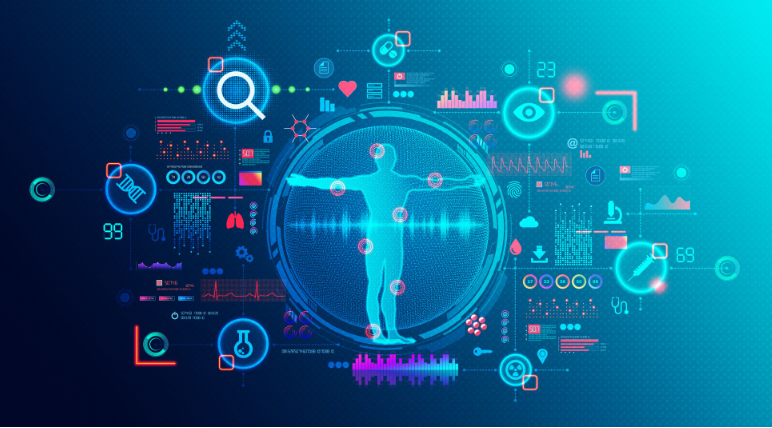3 Ways Technology Connects Patients and Doctors
- 0

The healthcare landscape is undergoing a profound and unprecedented transformation, primarily propelled by the relentless march of technology. The intersection of medicine and innovation has brought about remarkable changes in recent years, revolutionizing how patients and healthcare providers communicate and interact. In this era of digital healthcare, technology has emerged as the linchpin, seamlessly connecting patients and their doctors, facilitating improved healthcare outcomes and enhancing the overall healthcare experience. Technology is the conduit between patients and their healthcare providers, making healthcare more accessible, efficient, and patient-centric. Technology has changed doctor-patient relationships forever.
Telemedicine
Telemedicine online, also known as telehealth, has revolutionized how patients access healthcare services. Services can be provided in different ways, including:
• Video Consultations – Patients can schedule virtual appointments via secure video conferencing with their healthcare providers. During these sessions, patients and doctors can discuss symptoms, review test results, and even conduct physical examinations using video. This saves time and eliminates the need for travel, helping to ensure that patients in rural and remote areas can access specialized care.
• Remote Monitoring – For patients with chronic conditions, remote patient monitoring solutions allow doctors to monitor vital signs and health metrics remotely. These devices can transmit real-time data, such as heart rate, blood pressure, and glucose levels, to a secure online platform. Doctors can then analyze this data and make informed decisions about patient care, intervening when necessary. This proactive approach to healthcare management results in fewer emergency hospital admissions and improved overall patient health outcomes.
• Prescription and Refill Management – Technology streamlines the prescription and medication management process by offering features like automatic prescription refills and reminders. Patients can request prescription refills through secure online portals, and doctors can electronically send prescriptions to pharmacies, reducing errors and improving medication adherence. Additionally, electronic prescription systems incorporate safety checks, minimizing the risk of adverse drug interactions.
Electronic Health Records
Electronic Health Records are digital versions of patients’ medical histories, diagnoses, treatments, and test results. These records are accessible to both patients and healthcare providers, fostering better communication and coordination of care.
• Patient Access – Patients can log into secure online portals to access their electronic health records, allowing them to review their medical history, track test results, and even share this information with other healthcare providers, ensuring continuity of care. This empowers patients to actively participate in healthcare decisions and advocate for personalized treatment plans.
• Interoperability – Electronic health records can be seamlessly shared among healthcare systems, enhancing coordination between primary care physicians, specialists and hospitals. This interoperability reduces redundancy in testing, lowers healthcare costs, and minimizes errors in diagnosis and treatment. Healthcare providers can access critical patient data promptly, improving the quality of care.
• Data-Driven Healthcare – Electronic health records enable data-driven healthcare by allowing doctors to analyze large datasets. By identifying trends and patterns, healthcare providers can offer more personalized treatment plans and develop effective preventive care strategies, ultimately leading to better patient health outcomes.
Mobile Health Apps
The proliferation of smartphones has led to a surge in healthcare-related mobile applications, empowering patients to take control of their health and stay connected with their doctors. Mobile health apps deliver educational content, empowering patients with knowledge about their conditions, treatment options and preventive measures. These apps are instrumental in enhancing health literacy and enabling informed decision-making. In addition, mobile health apps allow real-time tracking of chronic conditions like diabetes, heart disease and asthma. Patients can share this data with their healthcare providers, facilitating timely interventions and adjustments to treatment plans. This constant monitoring ensures that patients receive the most relevant and effective care. Beyond physical health, mobile apps offer teletherapy sessions, support groups and stress management tools. These mental health resources recognize the importance of emotional well-being in healthcare. Patients can access these services discreetly and conveniently, breaking down barriers to seeking mental health support.
Conclusion
Technology has transformed the patient-doctor relationship in profound ways. Patients have greater access to doctors and more control over their health through telemedicine, electronic health records, and mobile health apps. These innovations enhance convenience, reduce healthcare costs, and improve healthcare outcomes and patients’ overall well-being. As technology evolves, the healthcare industry can expect even more innovative ways to connect patients to their doctors, further improving the quality and accessibility of healthcare services. This digital revolution in healthcare is poised to create a healthier and more connected world.






